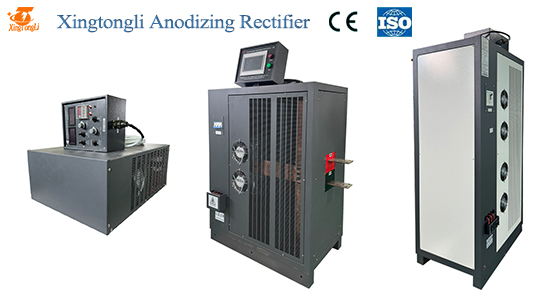Anodizing is a process that involves creating a protective oxide layer on metal surfaces, commonly used in industries such as automotive, aerospace, and electronics. An anodizing rectifier is a crucial component in this process, as it provides the necessary power supply for the anodizing tank. Choosing the right anodizing rectifier is essential for achieving high-quality anodized finishes and ensuring the efficiency of the anodizing process.
To overcome the deficiencies in hardness, wear resistance, and expand the application range, thereby prolonging the service life of aluminum alloys, surface treatment technology has become an indispensable part of their usage. Among these technologies, anodizing is the most widely applied and successful.
Anodic oxidation (anodic oxidation) refers to the electrochemical oxidation of metals or alloys. Aluminum and its alloys, under specific electrolyte and process conditions, form an oxide film on the aluminum product (anode) due to the action of an external electric current. Unless otherwise specified, anodizing typically refers to sulfuric acid anodizing.
When selecting an anodizing rectifier, several factors need to be considered to ensure it meets the specific requirements of the anodizing process. The first consideration is the power output of the rectifier. The rectifier should be capable of delivering the required voltage and current levels to achieve the desired anodizing results. It’s important to calculate the power requirements based on the size of the anodizing tank and the type of metal being anodized.
Another important factor to consider is the rectifier’s control and monitoring capabilities. A good anodizing rectifier should have precise control features that allow for adjustments to the voltage and current output. Additionally, it should have monitoring capabilities to ensure the stability and consistency of the anodizing process.
The reliability and durability of the rectifier are also crucial factors to consider. An anodizing rectifier is a long-term investment, and it should be able to withstand the harsh operating conditions of an anodizing environment. Look for a rectifier that is built with high-quality components and has a proven track record of reliability.
Furthermore, the efficiency and energy-saving features of the rectifier should not be overlooked. An energy-efficient rectifier can help reduce operating costs and minimize environmental impact.
It’s also important to consider the technical support and after-sales service provided by the rectifier manufacturer. A reputable manufacturer should offer technical assistance, maintenance support, and readily available spare parts.
In conclusion, choosing the right anodizing rectifier is essential for the success of the anodizing process. By considering factors such as power output, control capabilities, reliability, efficiency, and manufacturer support, you can select an anodizing rectifier that meets your specific needs and ensures the quality and efficiency of your anodizing operations.

Media Contact
Company Name: Chengdu Xingtongli Power Supply Equipment Co., Ltd.
Email: Send Email
Country: China
Website: https://www.cdxtlpower.com/
